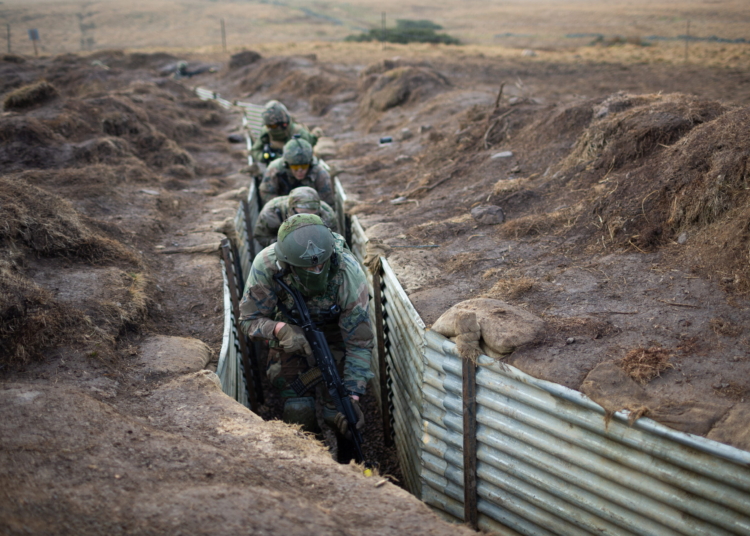In World War I, trench warfare became a defining aspect of the conflict, with soldiers enduring grueling conditions and constant danger. The trenches were divided into front-line, support, and reserve sections, each with its own role in the defense. Life in the trenches was marked by mud, disease, and the constant threat of enemy attacks. Combat in the trenches was brutal and up-close, taking a significant toll on the soldiers. The legacy of trench warfare led to changes in how war was perceived and fought, and serves as a reminder of the human cost of conflict. The experience of trench warfare during World War I was one of unimaginable hardship and suffering.
Trench Warfare: Life in the Muddy Depths of World War I
World War I, also known as the Great War, was a conflict that forever changed the face of warfare. One of the most iconic aspects of this war was the extensive use of trench warfare. Trenches, which were deep ditches dug into the ground, became the battlegrounds for soldiers on both sides of the conflict. Life in the trenches was grueling, brutal, and harrowing, as soldiers faced unimaginable challenges such as mud, disease, and constant danger.
The Anatomy of Trenches
Trenches were typically divided into three main sections: the front-line trenches, support trenches, and reserve trenches. The front-line trenches were the closest to the enemy and were the most heavily fortified. Behind the front-line trenches were the support trenches, which housed medical stations, supply depots, and living quarters for the soldiers. Finally, the reserve trenches were even further back and served as a last line of defense.
Conditions in the Trenches
Life in the trenches was incredibly difficult. The trenches were often filled with mud and water, making them a breeding ground for disease and infection. In addition, the constant shelling and gunfire made them extremely dangerous. Soldiers lived in constant fear of enemy attacks and sniper fire. Furthermore, the trenches were infested with rats and lice, which added to the already unbearable living conditions. The combination of all these factors led to high rates of illness and mental distress among the soldiers.
Combat in the Trenches
Combat in the trenches was brutal and up-close. Soldiers had to contend with the use of automatic weapons, grenades, and gas attacks. The close quarters and the constant threat of ambush made every moment in the trenches perilous. The mental toll of constantly being on alert and in fear for one’s life was immense. Many soldiers developed a condition known as “trench fever,” a debilitating illness caused by the stress and horror of trench warfare.
The Legacy of Trench Warfare
Trench warfare left a lasting impact on the soldiers who endured it and on the world at large. The horrors of the trenches led to a significant shift in how war was perceived, spurring the development of international laws and conventions aimed at mitigating the suffering of soldiers. The use of trench warfare also forever altered the tactics and strategies of modern warfare, as military leaders sought to find new ways to break through entrenched defenses. Today, the legacy of trench warfare serves as a stark reminder of the human cost of war and the importance of seeking peaceful solutions to conflict.
Conclusion
The experience of trench warfare during World War I was one of unimaginable hardship and suffering. Soldiers faced constant danger, disease, and mental anguish as they struggled to survive in the muddy depths of the trenches. The legacy of trench warfare serves as a poignant reminder of the high cost of war and the need for humanity to strive for peace.













